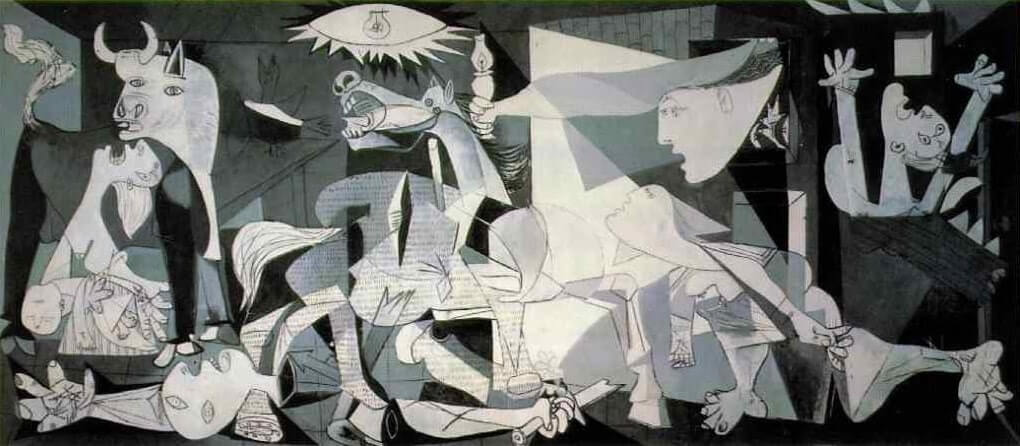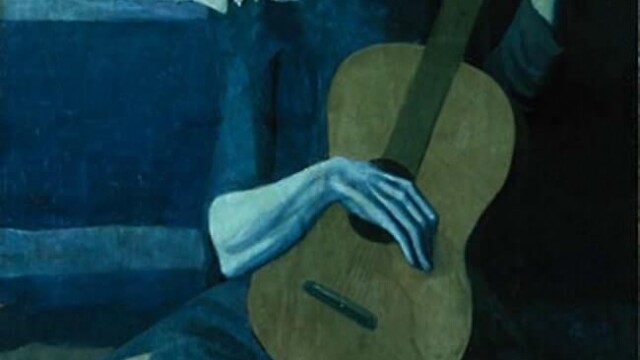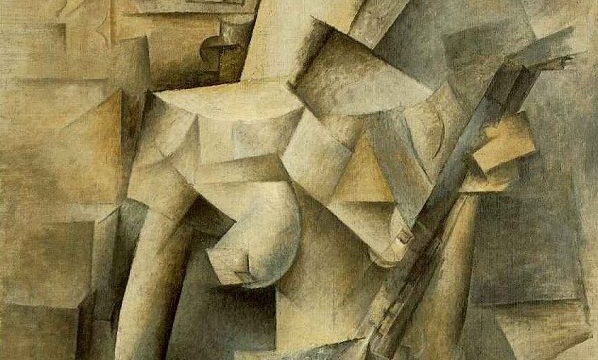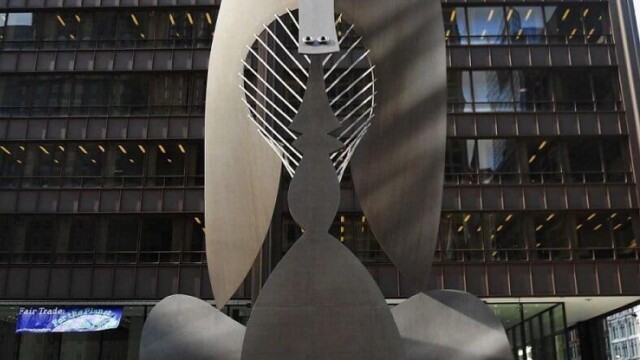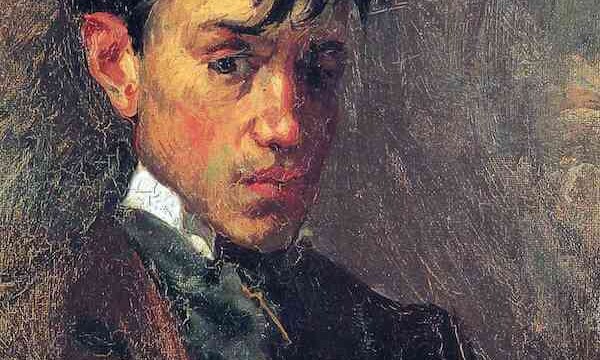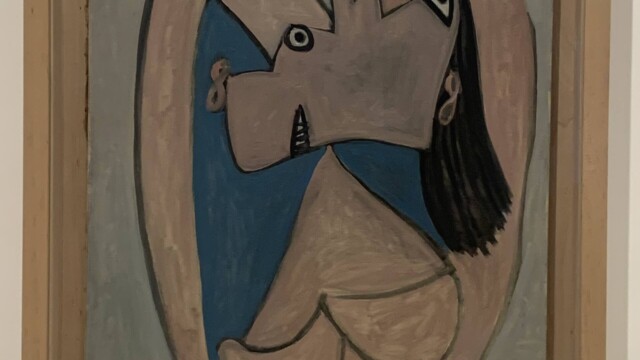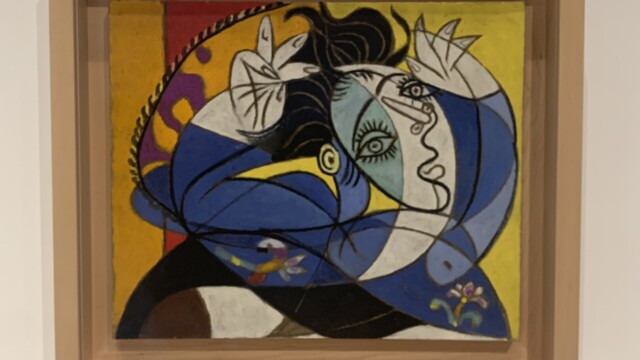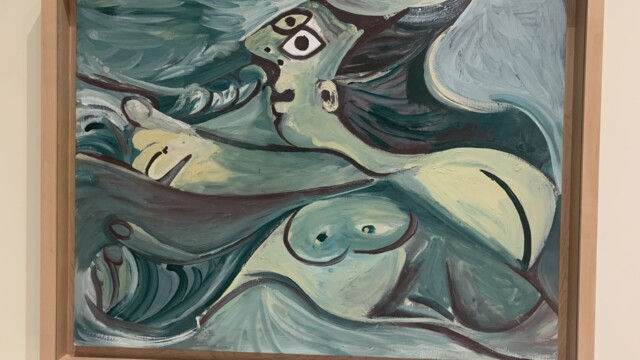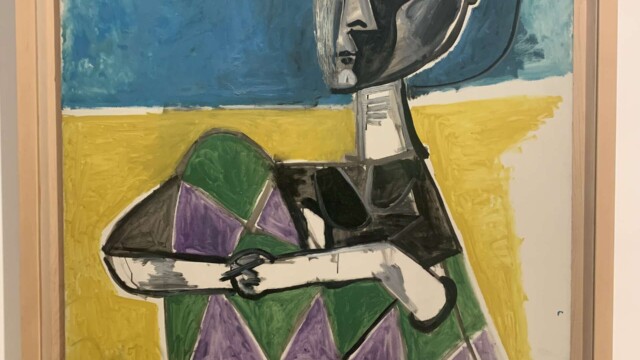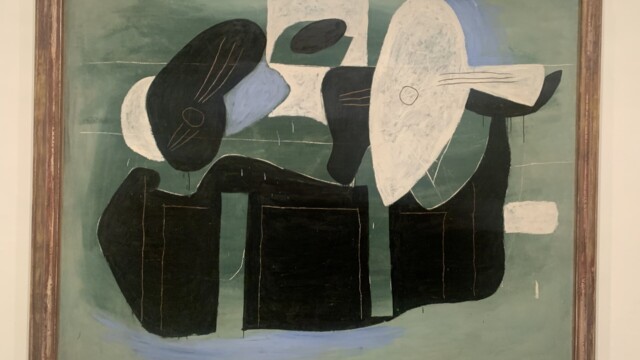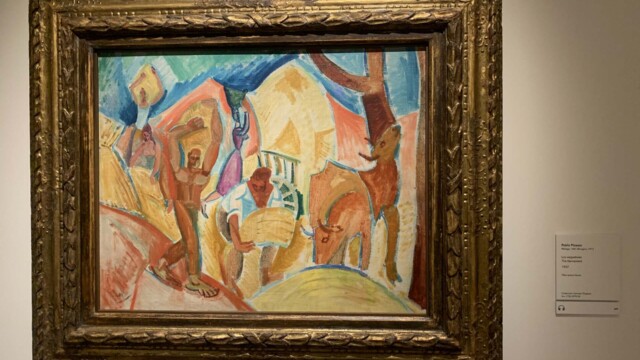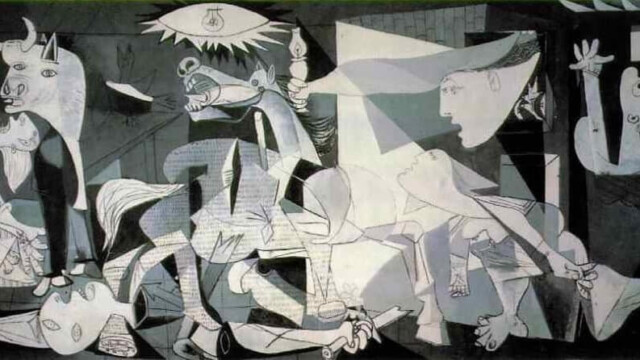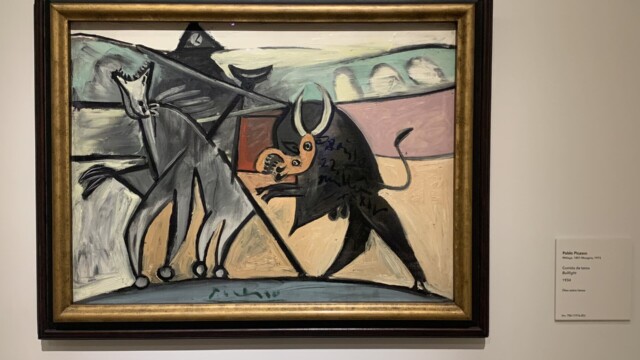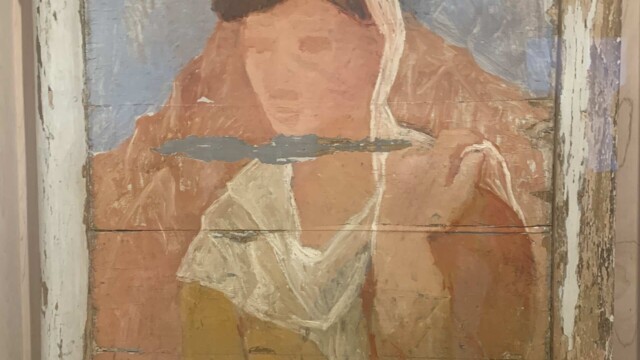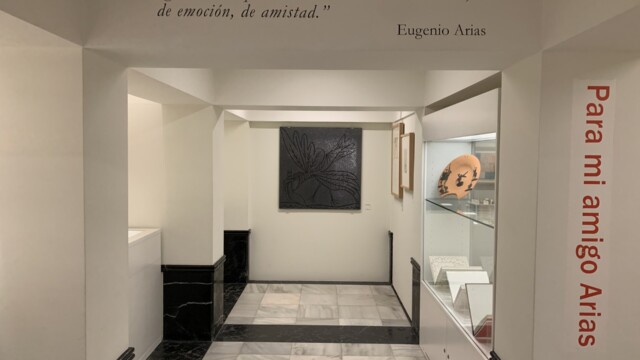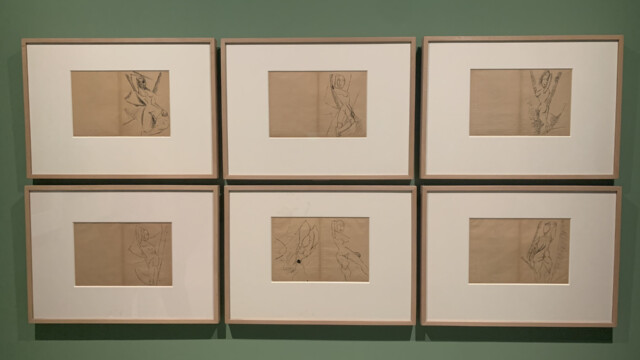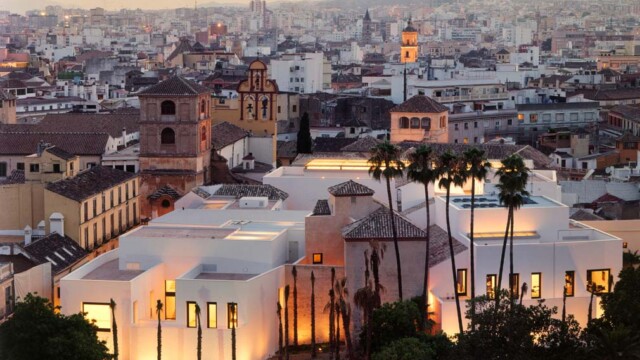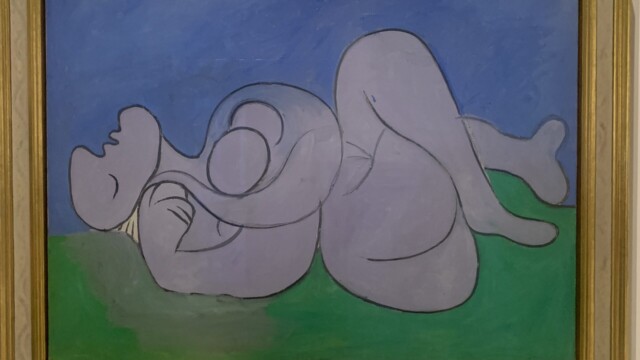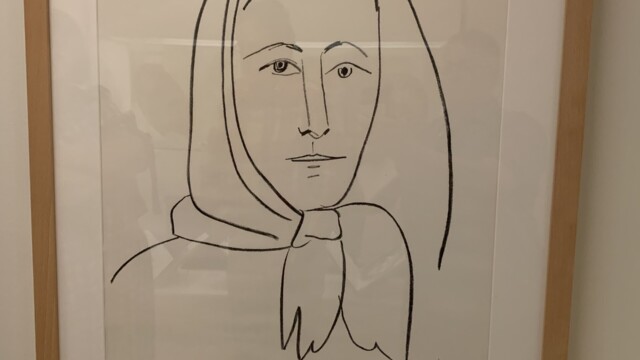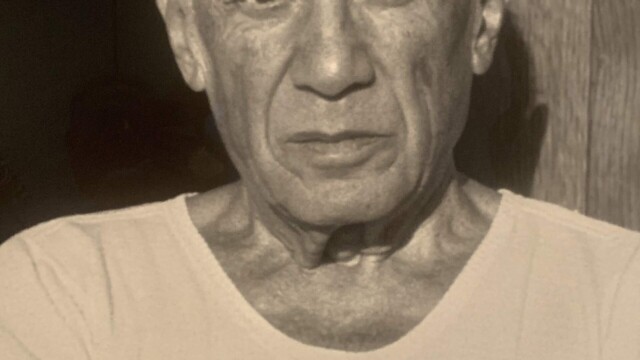Love Pablo Picasso’s work? I do, too. A Picasso exhibitions review is difficult to achieve because he produced more than 148,500 works in his lifetime, according to PabloPicasso.org. Picasso’s work travels to museums in temporary exhibitions and is permanently exhibited at others. So, Picassos are found all over the world. I’ve been to several museums where his work is exhibited — this review is a bit of a roundup of his work as 2023 marked the 50th anniversary of his passing.
Growing up in Chicago, my connection to Pablo Picasso was the “The Picasso,” an untitled sculpture made of steel that stands 50 feet tall.
It was commissioned by the City of Chicago in 1963, completed in 1967, and stands next to the Richard M. Daley Plaza building. I didn’t realize Picasso gave the sculpture as a gift the people of Chicago, and he never explained what it represented (although there are some educated guesses it was inspired by a French woman who posed for him in 1954).
I did know Pablo Picasso invented cubism. But it wasn’t until I first traveled to Barcelona about 15 years ago when I began to learn and understand the artist — at the Picasso Museum Barcelona. I eventually learned you can create your own Picasso travel route throughout Spain.
Pablo Picasso lived for 91 years and Picasso 2023 marked exhibitions throughout Spain that celebrate the 50 anniversary of his passing.
For those interested in seeing his work, you should visit:
- Picasso Museum Malaga
- Picasso Museum Barcelona
- Museo Reina Sophia in Madrid
- Picasso Museum – Eugenio Arias Collection
You most likely heard of the first three museums, but on my most recent visit to Spain, I had a chance to visit this Picasso Museum – Eugenio Arias Collection in Buitrago del Lozoya, Spain — a small castle and medieval walled town with about 1,800 residents today. This is a small museum that’s located about an hour’s drive outside of Madrid. Eugenio Arias was Picasso’s barber, and they were close for the last 35 years of Picasso’s life when both were living in France. Picasso gifted Arias with his work throughout the years. These Picasso’s remained with the family and now they are building out a museum in Arias’ home town. This is definitely worthy of a day visit.
Picasso created paintings, sculptures, ceramics and illustrations. He authored books and even wrote two plays.
Most of his life was spent in Spain and France. He was one of the most important artists in the first half of the 20th century, and he changed how art is seen today.
Pablo Picasso Periods
Picasso was more than a painter and sculptor. His style evolved over time, often viewed in different periods that follow his footsteps over the decades. The following shares some insights into each period.
-
- Picasso Review: The Early Years (1881 to 1899)
Picasso was born October 25, 1881, in Malaga, Spain. (By the way, if you visit Malaga, the city has developed a Malaga Picasso footsteps route that is worth taking). Picasso’s family then moved to Corunna, Spain, from 1881 to 1885. Picasso spent the summer of 1895 in Malaga and then visited the Prado Museum in Madrid in 1895. Then, his family moved to Barcelona where he continued his fine art studies for an additional two years. In 1897, he continued his studies in Madrid and then returned to Barcelona in 1899. He painted a Self-Portrait as a teenager in 1896 (exhibition at Picasso Museum Barcelona).
- Picasso Review: The Early Years (1881 to 1899)
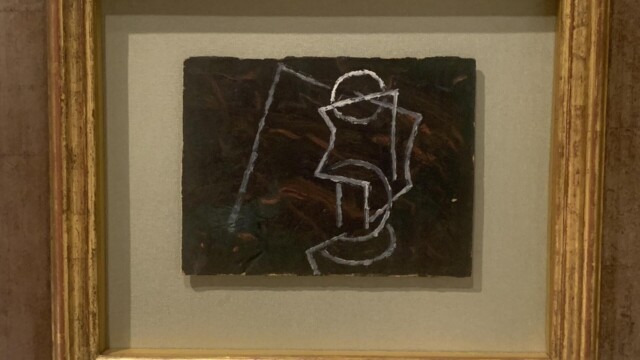
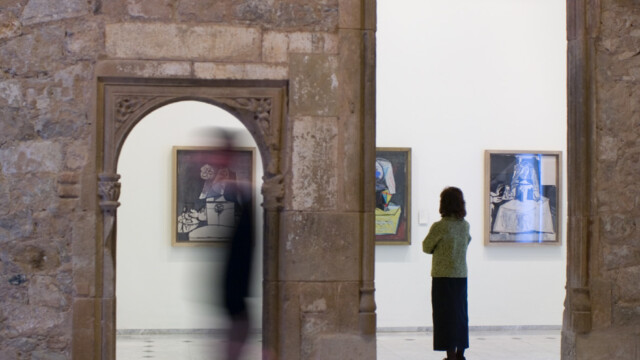
- Picasso Review: Blue Period (1900 to 1904)
During this time, Picasso painted mostly in shades of blue and blue-green. His work was somber — painting images of prostitutes, drinks and the downtrodden. The Old Guitarist is a famous piece during this time (exhibition at the Art Institute of Chicago). This era began with the suicide of one of his close friends. - Picasso Review: Rose Period (1904 to 1906)
Picasso’s painting became more cheerful, incorporating shades of pink and orange. And his subject matter often focused on harlequins, circus performers and clowns. Acrobat and Young Harlequin is a popular example from this time (exhibition at the Barnes Foundation in Philadelphia; note: I have not been here). It was also during this time when Picasso began to experiment with styles to keep his subjects anonymous. Picasso’s Rose Period was credited in part to his new relationship with Fernande Olivier, a French artist, model, muse and lover. Picasso and Fernande’s relationship ended in 1912 (she was married and never divorced before they met or during the relationship). It’s an interesting side note to know that Fernande published a memoir of their relationship 20 years after they met and continued to write about Picasso until he agreed to pay her a pension for life in 1956 in exchange for not publishing anything else about him. - Picasso Review: African Period (1907 to 1909)
Picasso and other European artists during the early 1900s were influenced by African art. African sculpture was avante-garde in the development of modern art. Les Demoiselles d’Avignon (exhibition at the Museum of Modern Art in New York; note: I have not been there) is one of his more popular paintings of the time, and it also incorporated elements that would transition his work into the direction of cubism. - Picasso Review: Cubism Period (1909 to 1912)
Picasso worked with George Braque to develop what is known as analytical cubism between these years — it was the only time Picasso worked with another artist in this way. Their approach to cubism focused on natural forms and reducing them into two-dimensional parts on a two-dimensional plane. Girl with a Mandolin is a famous example from this time (exhibition at the Museum of Modern Art in New York). Picasso then evolved cubism into a pure abstract art. - Picasso Review: Neoclassicism and Surrealism Period (1918 to 1945)
After the start of Cubism, Picasso was widely recognized as modern artist. During World War I, as a resident of neutral Spain, Picasso refined his work with cubism and then added natural elements. He experimented with overlapping cubist and classical styles. He made his trip to Italy in 1917 and the collections there. He married Olga in 1918 and began to incorporate more conventional styles. Two Women Running on the Beach is an example of his neoclassic work, also lending commentary to how life must be lived.
Surrealism followed in the 1920s when intellectuals, writers and artists that focused on positive expression. The Three Dancers (1925) is an example of Picasso’s take on surrealism (exhibition at The Tate Modern in London). It focuses on individuality. - Picasso Review: The War Years – Spanish Civil War (1936 to 1939)
By this time, Picasso was living in Paris and had a tremendous international following. His painting and work focused on symbolism and reflected the impact of war. Picasso’s most famous work during this time was Guernica (1937). It’s a gray and black painting on canvas that stands 11.5 feet tall by 25.5″ wide. Guernica is a small village in the Basque region that was bombed and destroyed during the war. Picasso’s Guernica (exhibition at The Reina Sofia in Madrid) depicted his anger about the war. - Picasso Review: After the War and Later (after 1940)
Europe faced political instability throughout the 1920s and 30s, as Germany expanded territory. Though the Spanish Civil War ended, World War II officially began in 1939. Picasso remained in Paris throughout WWII and after it ended, Picasso’s painting and sculpture work became more joyful and symbolic. In 1954 he painted Jacqueline Seated (exhibition at Museo Picasso Malaga). It serves as an example of showing “reality in movement.”
During one of my city reviews to Barcelona I was surprised to learn that Picasso also created murals on buildings — found on the Col-lei d’Arcquitectes de Catalunya.
Permanent and traveling exhibitions of Picasso’s work can be found at art museums around the world.
Interested in reviewing more of Picasso’s work? Check out Picasso’s biography by decade outlined by the Picasso Administration in Paris, France.
Note: Information for this review was compiled from my personal travels, museum visits (Picasso Museum Barcelona, Picasso Museum Malaga, Reina Sophia, Eugenio Arias Collection, Art Institute of Chicago), a variety of websites and other sources. Special thanks to the creators of PabloPicaso.org, a private website that is not affiliated with Pablo Picasso or his representatives.

